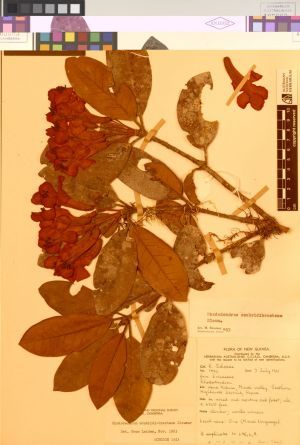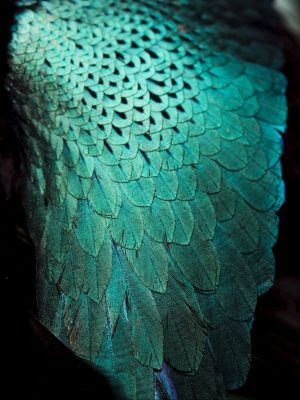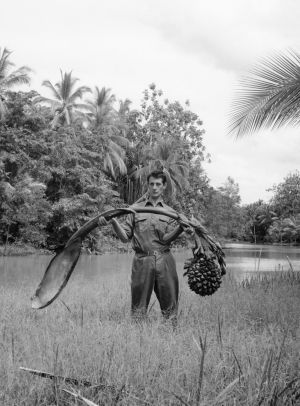By Juanita Nonwo – EM TV Online
The Island of New Guinea, which holds two Melanesian groups of people – the Irian Jaya province of Indonesia, and towards the east the country of Papua New Guinea (PNG), is home to a vast range of thousands of species of plants and animals whose existence are now sadly being threatened by various human activities.
According to World Wildlife Fund, New Guinea has about 10 per cent of the world’s vertebrates that are concentrated on the island, while 7 per cent of the world’s higher plants grow on the islands productive soils.
Being a Pacific bio-diversity hotspot, the island has attracted scientists and researchers from all over the world.
Since the 1950s, Australian researchers have been collecting more than 100,000 records of plants and animals specimens.
This treasure collection of rich flora and fauna was all recorded on hand-written or typed notes, and taped to the specimen – all stored in Canberra.
The federal government agency for scientific research in Australia – Commonwealth Scientific and Industrial Research Organisation (CSIRO) has taken the task to digitalise all its PNG collections where they are based at the Australian National Herbarium.
But what is most exciting it that CSIRO have decided to hand these digital records over to Papua New Guinea.
The transfer of these digital flora and fauna records was a collective effort between multiple government agencies – the herbarium, the Australian National Insect Collection, and the Australian National Wildlife Collection, all handed their share of collections over to the Australian Department of Environment, who then transferred it over to PNG’s Conservation and Environment Protection Authority.

A plant specimen collected by CSIRO in PNG in 1961. Photo Source: The Canberra Times
The database includes about 11,778 insect records, 15,269 animal records (amphibians, reptiles, mammals, birds) and 79,774 plant records.
“It’s a really rich source of data, it’s invaluable. But you can’t recreate it, and you can’t go recollect this stuff, a lot of it is historical,” commented Brendan Lepschi, the Herbarium curator.
It is hoped that the flora and fauna records may be of help to PNG’s government in managing conservation and tourism around the well-known Kokoda Track, using these records as a basis of knowing which areas were homes to the various plant and animal species; including the Owen Stanley Range – which sees a lot of foot traffic, raising a concern for CEPA to protect the region’s biodiversity.
“The PNG government is really keen to know what’s ecologically sensitive around the track, decision makers can use [the data] to help with understanding what lives where, and why it’s there, and they can use that information to inform their conservation,” added Lepschi.

The Superb Bird of Paradise was among some of the specimens collected in PNG by CSIRO. Photo Source: The Canberra Times
CSIRO stated that PNG’s Conservation and Environment Protection Authority has invested resources through the Kokoda Initiative to develop a notional biodiversity database.
“This project is very important for PNG, It’s a substantial vote of confidence from the international community that PNG now has the systems and expertise to manage and provide access to this information, and will enable CEPA to make better biodiversity management decisions.” Stated James Sabi, from CEPA. 
CSIRO botanist Lyn Craven, holding a fruiting stalk of the mangrove palm near Ravikivau, Purari River delta, Papua New Guinea in 1966. Photo: Dick Schodde. Photo Source: The Canberra Times


